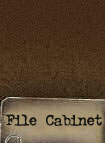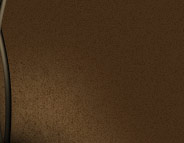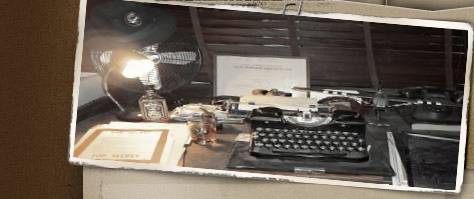 |
| |

Feldkommandantur 642
"Arnheim"
During the occupation by Nazi
Germany, the Netherlands were
divided into districts, each with a
Feldkommandantur (Field
Command; FK) leading them. Pending
the occupation the layout changed,
and with it the number and locations
of the Feldkommandanturen. In
the summer of 1943 a new Arnhem FK
was added to the list. From then on,
the Northern and Eastern regions of
the Netherlands were led by the FK
642 'Arnheim'.
Generalmajor Friedrich Kussin
(1895-1944) became its commander.
Under his command was a small,
administrative unit of the Heer
(Army) consisting of several
officers and female
Stabshelferinnen (typists,
telephone operators, et cetera). The
FK was stationed in a villa named
Heselbergh on Apeldoornse Weg in the
outskirts of Arnhem.
When Operation "Market Garden"
started on Sunday 17SEP1944, the
staff of the Feldkommandantur
remained on its posts. This was in
contrast with the local
Ortskommandantur, stationed on
Nieuwe Plein in downtown Arnhem
which was redeployed to the village
of Dieren immediately. A
Feldkommandantur typically was
responsible for the coordination of
the available units in its sector.
This explains why Generalmajor
Kussin went out to check in with the
SS training unit under the command
of SS-Obersturmbahnführer
Sepp Krafft. This unit had moved
into position in between Oosterbeek
and Wolfheze in the early hours of
the start of the operation. Here,
they caused the advancing British
troops on 'Tiger Route' (Utrechtse
Weg) some delay.
|
|
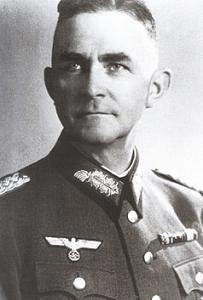
Generalmajor der
Infanterie Friedrich Kussin
Born on the 1st of March 1895
in Aurich, Niedersachsen, Germany |
|
On that Sunday September 17th General Kussin had heard about the
airborne landings North West of the
city for which he was responsible.
He and his driver Gefreiter
(corporal) Jozef Willeke , his aide
Unteroffizier (NCO) Max Koster and
bodyguard Unteroffizier Wilhelm 'Willi'
Haupt drove in their staff car, a
camouflage painted Citroen, probably
confiscated in France, to the Head
Quarters of "SS-Haupsturmführer"
(Major) Josef 'Sepp' Krafft,
commanding the SS-Panzer Grenadier
Depot und Reserve Battaljon 16, an
armored-infantry battalion. He
arrived at Krafft's HQ in the Hotel
Wolfheze at 17.15 hours. Krafft gave
Kussin the latest intelligence and
the Feldkommandant asked of Krafft's
Battalion to show all endurance
possible for the upcoming battle.
Kussin left via the same way he
came, much to the reluctance of
Krafft's staff.
Coming onto the junction of
Wolfhezer Weg and Utrechtse Weg he
and his staff ran into advancing
British paratroopers.
This is the account of the officer
in charge of the leading British
platoon, Lieutenant James Arthur
Stacey Cleminson
of No.5 Platoon, "B" Company, 3rd
Parachute Battalion:
"The platoon had been selected to
lead the 3rd Battalion's march to
Arnhem, and for the first two hours
they made good progress, scouting
ahead of the main force. As they
approached Battalion Krafft's
blocking line east of Wolfheze, a
German Citroen staff car suddenly
appeared at a junction in between
the platoon's positions, prompting
these units to open fire with rifles
and sten guns, killing all inside.
So enthusiastic had been the firing
that both vehicle and passengers
were riddled with bullets and it
took Cleminson's intervention to get
his men to cease fire. This prize
put the platoon on a high. Cleminson
did not discover until after the war
that his men had killed General
Friedrich Kussin, the German
commander of the Arnhem area. He had
been visiting Krafft when he
unwisely decided to return to the
town and his own headquarters."
The account of another eye-witness, Staff-Sergeant
John Oliver McGeough, a glider pilot
with "C" Squadron, No.2 Wing:
"The following morning
[Monday, September 18th 1944, Battle
Detective.com]we continued
towards Oosterbeek and at the
junction of Wolfheze Weg and
Utrechtseweg saw the first German
dead. A staff car (a camouflaged
Citroen) had come down the road from
Wolfheze and had been shot up by men
of the 2nd Parachute Btn at about
1600 hrs on Sunday afternoon. Major
General Kussin, German field
commander at Arnhem and three others
in the car were on a reconnaissance
mission and were unlucky to be
spotted by the parachutists. Shortly
after leaving the scene of the
ambush we reached the Hartenstein
Hotel at Oosterbeek and there I was
to remain for the rest of the
battle."
The account of Private Thomas Emyr
Davies of Mortar Platoon, HQ &
Support Company, 1st Parachute
Battalion:
"Pushing our way slowly on to the
next crossroads, we were confronted
with the gruesome picture of an
incident which must have happened
only minutes previously. A German
staff car, obviously caught up,
whilst trying to escape back behind
their own lines, in the crossfire
from the company on our right flank
was slewed across the road riddled
with machine gun bullets, the
windscreen completely shattered. The
doors were flung wide open with
bodies hanging out on either side,
cut down in their in their bid to
save themselves. One, with a foot
still trapped in the car and dressed
in resplendent uniform adorned with
the red braid of a high-ranking
German officer, was still tightly
clutching a revolver. On the other
side of the car was the driver, his
lips kissing the dust from the road,
his arms outstretched from his
bullet-ridden body. In the back of
the vehicle were two more
passengers, their bodies huddled
closely together as if frozen in
mortal terror of the fate that had
befallen them. The shiny
patent-leather of the jack boots and
the bright red gash on the side of
the well-groomed head of the
general, whose face was twisted into
a devilish grin, gave a macabre feel
to the whole scene."
(from:
BBC HomeWW2 People's War)
The four staff members of FK 642
killed on the Wolfhezer Weg
junction, were registered as missing
in action by the Germans. That same
evening the command was transferred
to the 47 year old Major Ernst
Schleiffenbaum who was already on
Kussin’s staff.
|
|
The next day, Monday 18SEP1944, the
shot-up car of the Feldkommandant
Arnheim was filmed by members of the
Army Film and Photographic Unit (AFPU):
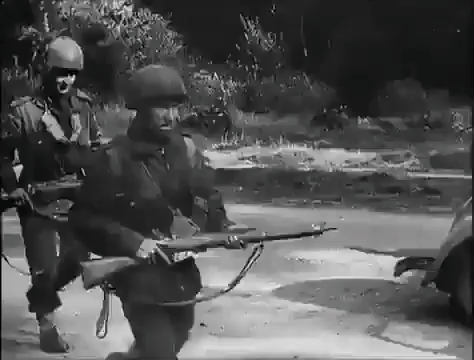
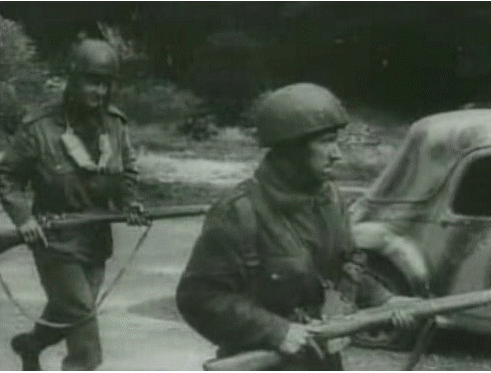 |
|
AFPU Unit
photographer Dennis Smith took the
following three photos at the ambush
site.
While Smith was there taking his
pictures, someone decided to pull
the two corpses in the front seat
out of the car. |
(click on the images
to enlarge)
.jpg) .jpg) .jpg)
|
|
“Karel Margry in Operation
Market-Garden Then and Now vol. 1,
(publishers: Battle of Britain
International Limited, 2002)
described how these photos came to
be:
"Above left: Later that morning,
Smith made an excursion one mile
down the road from Wolfheze to the
junction of Wolfhezerweg and
Utrechtseweg - (2) on the map on
page 297 - to photograph the site
where Generalmajor Friedrich Kussin
had been ambushed in his car the
previous day. Kussin, the commander
of Feldkommandantur 642 (the
military HQ in charge of the Arnhem
area), was just returning from a
vitit to the command post of SS-Sturmbannführer
Sepp Krafft in Hotel Wolfheze when
at 17:15 his Citroën staff car
bumped into B Company of 3rd Para
Battalion leading the advance to
Arnhem down Utrechtseweg. As the car
started to turn left in the
direction of Arnhem, the front men
of Lieutenant Jim Cleminson's No. 5
Platoon opened fire with Stens and
rifles, riddling the car with
bullets and killing the General, his
driver, Gefreiter Josef Willeke, and
his batman/interpreter,
Unteroffizier Max Köster. (Smith,
roll 2, frame 4.) Above right: While
Smith was there taking his pictures,
someone for some reason decided to
pull the two corpses in front seats
out of the car. Though this picture
has been published countless times,
no one has ever commented on the
ugly image of war which this photo
clearly shows, namely that the
General has been scalped indian-style.
Note also that his badges of rank
have been removed from his collar.
These were taken off by Dutch
commando Lieutenant Maarten
Knottenbelt, who passed the car just
after the ambush. (They were found
in Knottenbelt's pockets when he was
hospitalised at Nijmegen after the
battle.) On the 18th, Lance-Corporal
Harry Wilce of No. 4 Section, 1st
Airborne Provost Company, in
addition cut thr shoulder epaulettes
from the General's uniform, handing
them in for identification to a
group of officers in a nearby
building. Captain Pare, the chaplain
of No. 1 Wing of the Glider Pilot
Regiment, had two German POWs burry
the three dead by the side of the
road on Tuesday. Command of Kussin's
Feldkommandantur was taken over by
his 1a, Major Ernst Schleifenbaum.
(Smith, roll 2, frame 5.)” |
|
A closer look at the ambush scene
photos
The photos only show general Kussin
and his driver Willeke. His aide
Koster, a born Dutchman, is nowhere
to be seen and bodyguard Haupt had
at this time been removed from the
scene as he had survived the ambush
only to die of his wounds on a later
moment
Knowing that both Willeke and Kussin
had been removed from the vehicle
post-mortem, it is safe to assume
that the rifles seen on and under
Willeke's legs have been placed
there after the incident. We
consulted
a weapons expert who identified
both rifles as Dutch Mannlicher M95
No. 4 bicycle riders carbines
produced in the Hembrug factories in
Zaandam, the Netherlands.
See the diagram below.
Of interest, aside from the many
bullet impacts in the vehicle and
the blood stains on the driver's
seat and the rifle sling, is the
location of the headgear worn by the
general and his driver. In the first
photo, Willeke is seen still with
his M43 Feldmütze (field cap) on his
head. In the photo showing him next
to the vehicle, this cap is seen on
the driver's seat. The skin of
Willeke's head shows a ring-shaped
indentation were the rim of the
Feldmütze had been until just before
the photo was taken.
On Willeke's
right arm is an object of which we
are fairly certain that it is a
German officer's Schirmmütze (peaked
cap); most likely the general's
headgear. It is seen from the top of
the cap and it shows an alteration
on the top right side consistent
with the high velocity impact of a
bullet ripping though the outer
cloth of the cap and its lining. The
damage is similar to the tear in the
general's tunic next to his right
breast pocket which is also likely
to be caused by a bullet.
In light of the "scalp theory" to be
described below in the 27AUG2018
update, it is our theory that the
general wore his peaked cap when he
was hit by one of the British
bullets. This projectile tore
through the cloth of the cap and
subsequently through the flesh on
the top right side of the general's
head disconnecting ("skinning") a
portion of it from the skull up to
the rim of his cap where the skin
was held in place.
Again see the diagram below.
Our theory leaves no room for a
deliberate scalping by Allied
servicemen just before the photos
were taken. |
|
(click to enlarge)
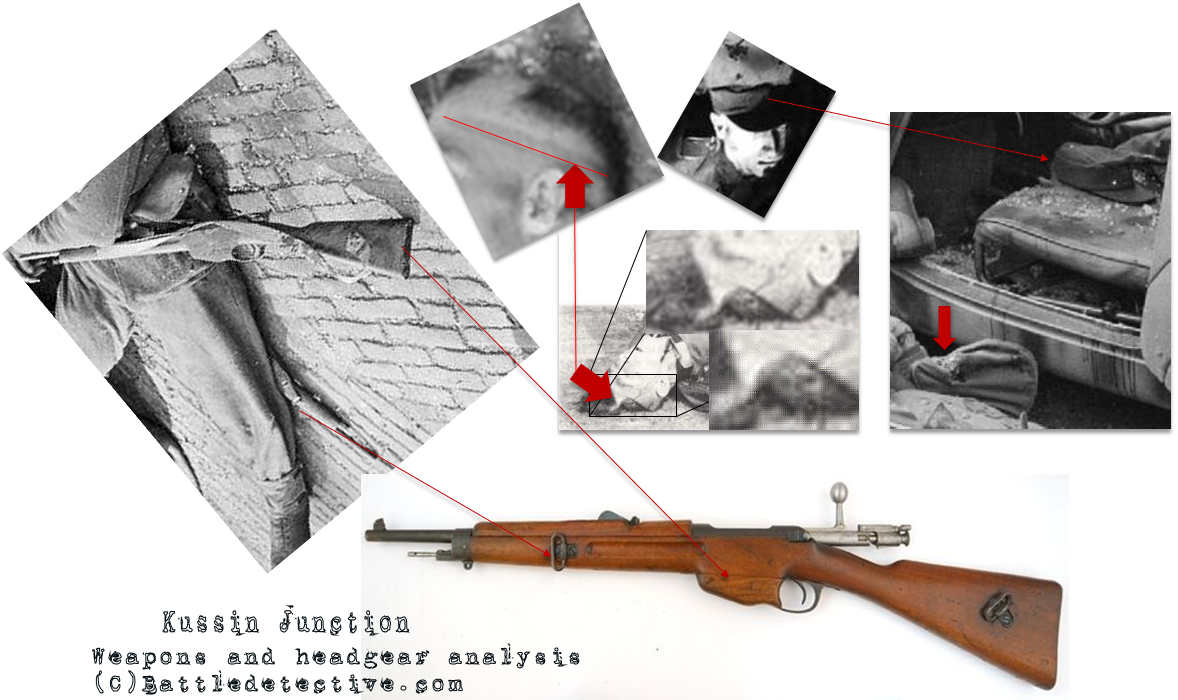 |
|
Location of the incident
This is the junction on a period
map:
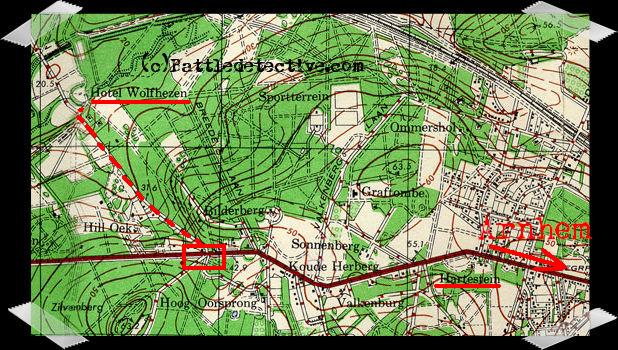 |
In the
Netherlands Institute for Military
History in The Hague we found the Allied
Intelligence translation of the 16th
SS Armored Grenadier Reserve
Battalion and Depot's "Kriegstagesbuch"
(War Diary, or After Action Report).
On page 8 the violent death of
the Feldkommandant is
described:
|
|
(click on the images
to enlarge)
|
|
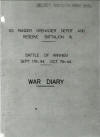
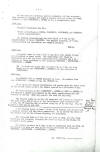 |
This is what the junction looked
like in 1973, when reporters of
After The Battle Magazine visited
the scene:
|
|
(click to enlarge)
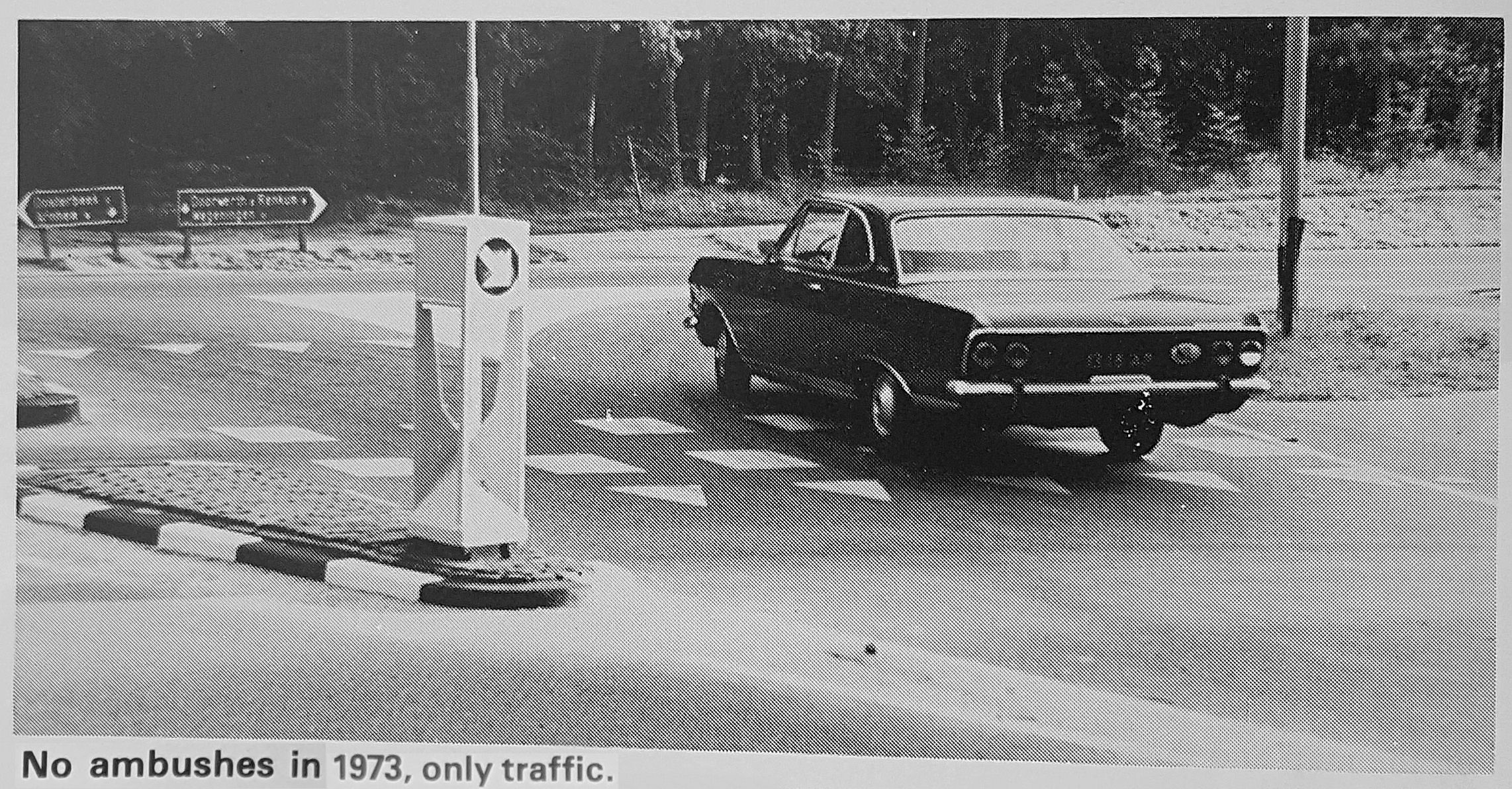
Page 14 of After
The Battle Magazine, Battle of
Arnhem Special Edition |
|
This is what the junction looks like
today. The orange pylons in the
middle of the junction indicate
approximately where General Kussin's
car was stopped in a hail of
bullets:
|
|
(click on the images
to enlarge)
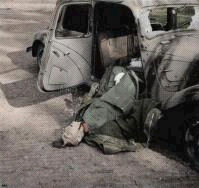 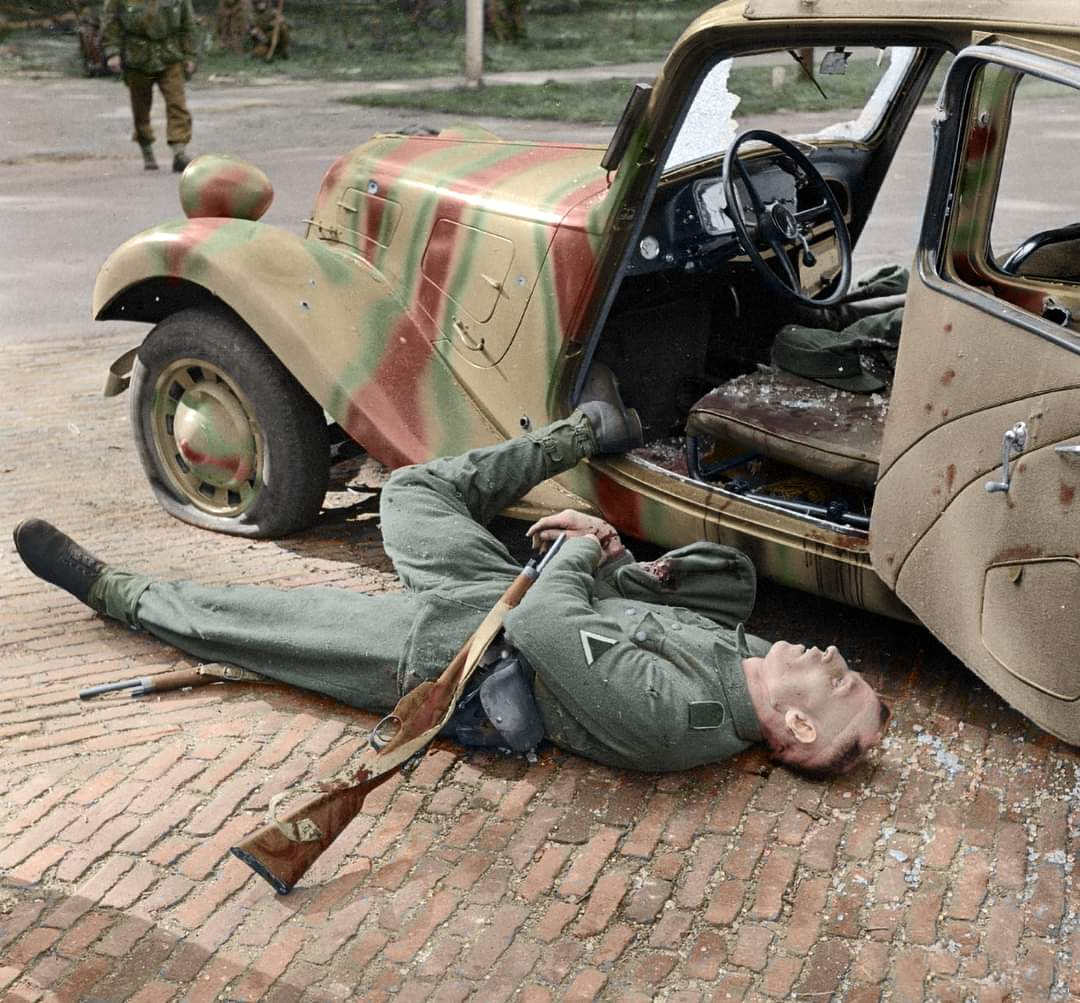 |
|
|
Who dunnit?
The shooting up of Generalmajor
Friedrich Kussin's staff car and its
occupants has always been attributed
to
men of No.5 Platoon, "B" Company,
3rd Parachute Battalion. Individual
shooters have never been identified
although an attempt was made in this
September 6th, 1979 article by
author Chris Jongboer in the
Oosterbeek periodical "Hoog en Laag"
which is still published and
circulated today:
"What was is with that German general?
In the memories of the airborne
landing near Wolfheze which you
could have read in "Hoog en Laag" of
the past weeks, is described how the
lieutenant Knottenbelt finds a
German general, shot dead, at the
corner of Wolfherzerweg and
Utrechtseweg. It is interesting how
a fact can start leading a life of
its own and how certain affairs can
be “claimed” by various people.
Aside from Mr. Knottenbelt still
others have been involved in the
shootout and various people are
known to me who claimed to have shot
and killed the general.
During a visit to Scotland Yard in
London I met Chief Inspector Percy
Browne who had jumped into Arnhem as
an Airborne trooper in 1944. He told
me that he had taken part in the
shootout.
A young soldier who, on the evening
of the day of the landing, had come
to my girlfriend on the Buunderkamp
told there, that he had helped a
German general to Kingdom come.
Meanwhile he showed a small kind of
swagger stick decorated with gems
that he had taken off the victim.
That adds up to three who has been
involved.
Several years later I met an elderly
Englishman in Wolfheze, accompanied
by his wife.
As an Airborne-officer he had been
dropped near Wolfheze, was now
writing a book about his wartime
and visited the battlefields where
he had fought. He also knew
something about the shooting of a
German general and liked to go to
the place where it had happened.
When we set off, his wife whispered
to me: "
he doesn’t want to know it, but he
has killed that general". That makes
four.
With a foreign reporter, who wanted
to write a story on crime in the
Netherlands, but who made a special
study of the Battle of Arnhem as a
hobby, I visited the battlefields
near Wolfheze, the cemetery and
Arnhem Bridge.
In hotel Hartenstein we went for a
cup of coffee.
A couple sat there, speaking English
with each other, the man apparently
of the age of a former Airborne
trooper.
I asked him if he was an Airborne
trooper and this seemed to be the
fact. On my question if he knew
about the general and who had
etcetera, etcetera,……the story gets
boring, he replied: Yes Sir, that
was corporal …. (unfortunately I
lost the name). He was killed in
action and you can find his grave at
the Airborne-cemetery”.
And that was the fifth.
It is very well possible, that they
were all involved. In all likelihood
even, who knows.
But dead he was; that general!
C.A. Jongboer" |
|
From the Gelders
Archief, Arnhem, Collection 2867 "Collectie
L.P.J. Vroemen"
Item B5-324; article "Hoe zat het
nou met die Duitse generaal?" in "Hoog
en Laag"
of Thursday September 6th 1979, 49th
year, number 36. |
Significance of the incident
In 2014 computer scientists Marten
Düring and Antal van den Bosch used
the incident on "Kussin Junction" to
describe multi-perspective event
detection in texts by linking
narratives referring to the same
event based on references to
location names.
On page 207 of their chapter
'Multi-perspective Event Detection
in Texts Documenting the 1944 Battle
of Arnhem" (in: "Text Mining. Theory
and Applications of Natural Language
Processing", Chris Biemann,
Alexander Mehler (eds). Springer
International Publishing, Cham,
Switzerland. ISBN
978-3-319-12654-8/978-3-319-12655-5)
they bring the essence of the event
forward as follows:
"Consider the example depicted in
Fig. 1. Each of the four source
snippets
7
contains enough hints to group them
together as referring to the same
event: mentions of the location, the
“Utrechtseweg” (Utrecht Road) near
the village of “Wolfheze”, the date
and time (as noted in a German war
diary, translated to English by
Allied Intelligence), and an
annotated photo taken by an Allied
photographer. Rather than merely
providing parts of a story that can
simply be concatenated, the
aggregation of resources from
different perspectives and a close
look at what they depict helps us to
reconstruct what happened. A key
question with regard to this
particular event is, why there
was no attempt to arrest the high
ranking Generalmajor Friedrich
Kussin, who was in charge of all
German troops in the Arnhem area.
Additional research has revealed
that Lieutenant Cleminson had simply
failed to recognize Kussin.”
7
The
sources surrounding this example
were researched by amateur historian
Tom Timmermans
(www.battledetective.com/Kussin_Junction.html)
.
The event has also been described by
professional historians in most
historical reconstructions of
Operation Market Garden including
[4,263] (Cornelius Ryan (1995) A
bridge too far, 1st edn. Simon &
Schuster, New York).
|
UPDATE 27MAR2016:
The Dutch municipality of Renkum (Oosterbeek
is within its jurisdiction) decided
recently to refurbish "Kussin
Junction" and install traffic
lights.
This is what the crossroads of
Wolfhezer Weg and Utrechtse Weg looks
like today:
|
|
(click on the images
to enlarge)
  
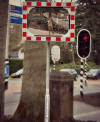   
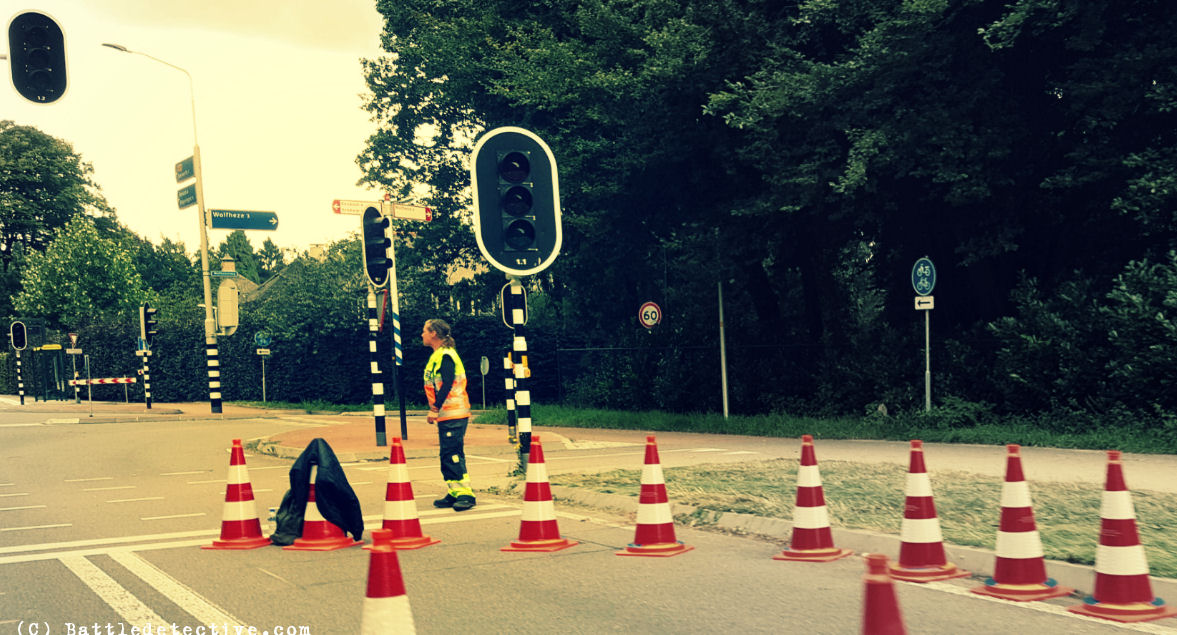 |
|
UPDATE 16JUL2016:
Most publications have it that
General Kussin had only two other
passengers in his staff car on that
fateful Sunday in 1944.
Historian Scott Revell has, however,
established that next to the
General, his driver Josef Willeke
and interpreter Max Koester (himself
born in Arnhem on 20OCT1903),
another passenger rode along in the
Citroen when it was shot up by
British paras.
In "Airborne Magazine", the
publication of the
Association of Friends of the
Airborne Museum Oosterbeek,
Volume 3, No. 1, in the accompanying
"Ministory 123", Part 2 of Revell's
report titled "The death of a German
General during the Battle of Arnhem"
is published.
In it, Revell describes how he was
able to purchase an obituary or
"prayer card" of Unteroffiizier (Non
Commissioned Officer) Willi Haupt
who, according to the text on the
card, had been the fourth occupant
of the car. |
|
(click on the image
to enlarge)
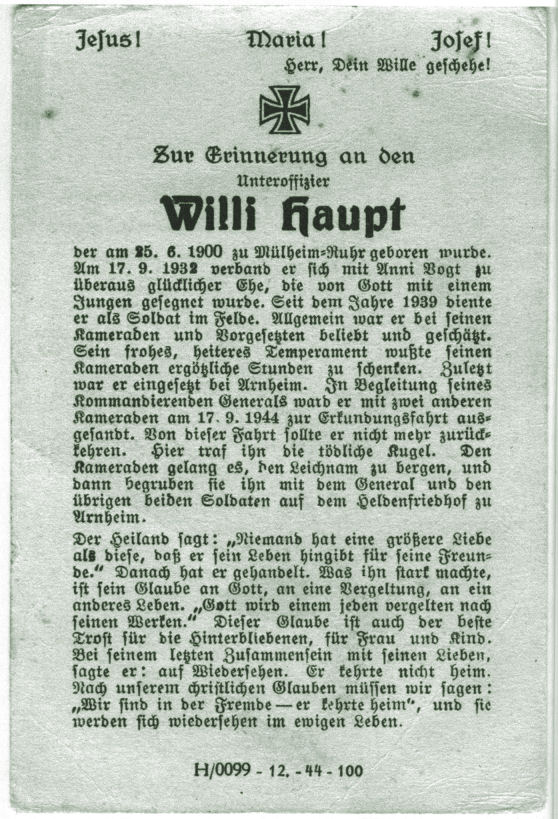
Front of the
obituary card of NCO Willi Haupt |
Pertaining to Haupt's military
service and him being killed in
action at Arnhem, the text on the
card translates to:
"In the end he was deployed
near Arnhem. Accompanying his
commanding General he rode out on a
reconnaissance mission together with
two other comrades on the 17th of
September 1944. He would not return
from this journey. It was here where
the deadly bullet hit him. The
comrades succeeded in recovering the
mortal remains and then they buried
him with the General and both other
soldiers on the Heroes Cemetery at
Arnhem."
|
After World War Two ended, the bodies of
"Generalmajor" (Major
General) Friedrich
Kussin, his driver "Gefreiter"
(Corporal) Josef Willeke and
interpreter "Unteroffiizier"
(Non Commissioned Officer) Max
Koester were reburied from the German
"Heroes Cemetery" on the Zypendaal
estate at Arnhem, alongside each other on the German
Soldiers Cemetery in Ysselsteyn, The
Netherlands.
Their remains rest in the graves
143, 144 and 144 on Row 6 in Plot
BL. |
|
(click on the images
to enlarge)
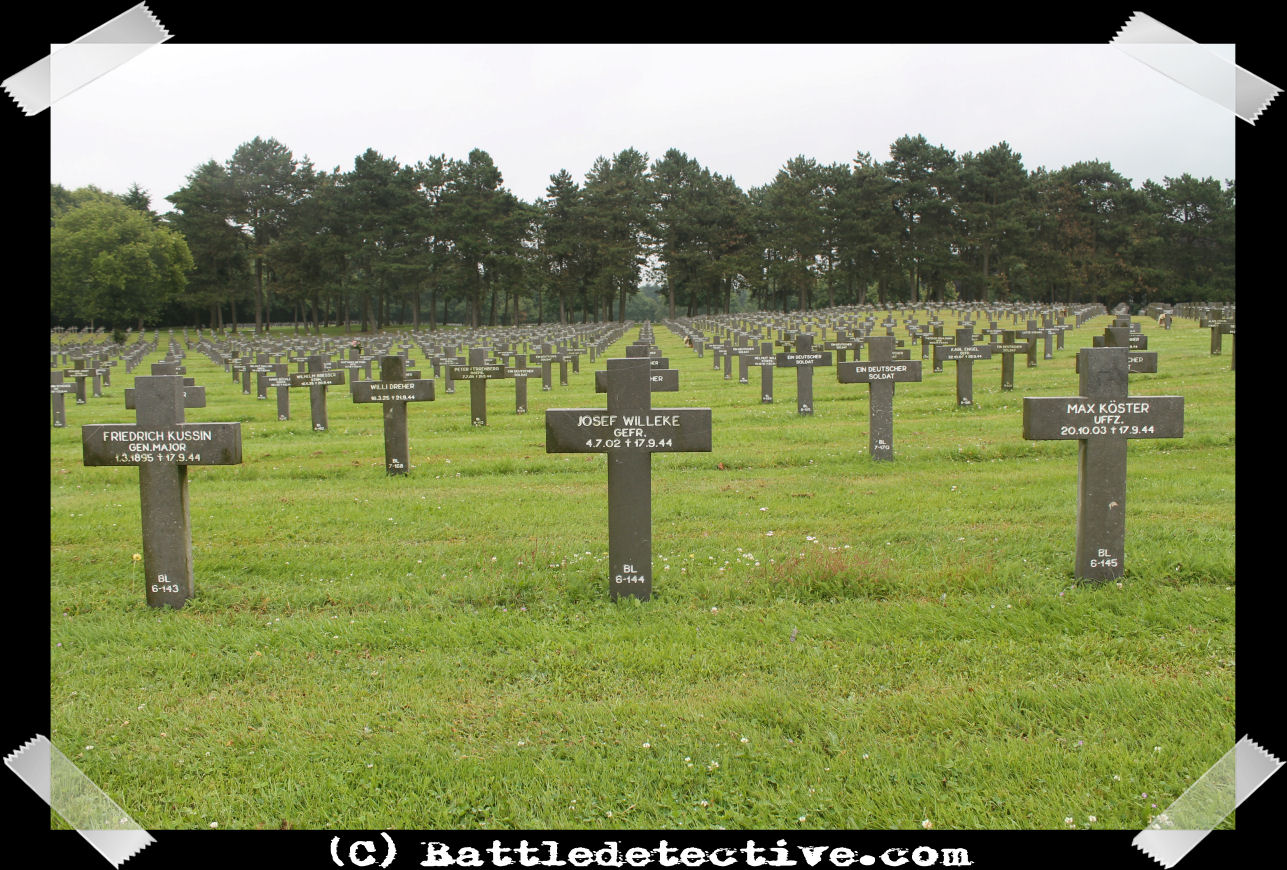 |
Unteroffiizier (Non
Commissioned Officer) Willi Haupt
was buried at this same cemetery in
grave 079 on Row 4
in Plot M.
In
Ministory 123 Revell presents
the most likely scenarios which
caused the confusion about the
number of passengers in the
General's car and about the burial
of Willi Haupt away from the other
occupants.
Over 30.000 Germans are buried in
the Ysselsteyn cemetery.
This is an impression of their
graves.
The General has the same
headstone as any other German
soldier ("Deutscher Soldat" in their
language): |
|

Grave BL 6 143 |

Grave BL 6 144 |

Grave BL 6 145 |

Grave M 4 79 |
|
Generalmajor Friedrich
KUSSIN, born on 1MAR1895 in
Aurich (Germany).
KIA at Oosterbeek 17SEP1944.
Unit: Feldkommandantur 642.
Text on identification disk:
Stab.P1.80-2- |
Gefreiter Josef WILLEKE born
on 4JUL1902 in Atteln
(Germany).
KIA at Oosterbeek 17SEP1944.
Unit: Feldkommandantur 642.
Text on identification disk:
St.Abt.Kf.EuA.Abt26-2743- |
Unteroffizier Max KOESTER,
born on 20OCT1903 in Arnhem
(the Netherlands).
KIA at Oosterbeek
17SEP1944.
Unit: Feldkommandantur 642.
Text on identification disk:
1.Br.Bau.E.Btl2 -5595- |
Unteroffizier Wilhelm HAUPT,
born on 25JUN1900 in Muelheim
(Germany).
KIA at Oosterbeek 17SEP1944.
Unit: Feldkommandantur 642.
Text on identification disk:
Gr.Kw.Kol.f.Betr.25 |
|
UPDATE 27AUG2018:
It is often suggested on online
platforms as well as in books that
General Kussin's mortal remains had
been mutilated and that the General
was 'scalped indian-style' as
written on page 299 of Karel
Margry's "Market Garden, then and
now".
We started an investigation into the
trauma sustained by General Kussin
on 17SEP1944 in Wolfheze in which we
were only partly successful.
Beforehand, we deemed scalping
fairly unlikely because it wasn't in
the nature of British troops in
World War Two to mutilate enemy
bodies in that fashion, there was no
motive for it, and the General's
scalp is still attached to his skull
in the post mortem photos taken on
the scene: |
|
.jpg) |
This agency obtained disinterment
and reburial records from not open
sources and is not at liberty to
publish them here entirely.
We have analyzed them and found them
only to contain dental records;
albeit elaborate ones.
From the description of the
General's teeth by members of the
Royal Netherlands Army's
Identification and Recovery Service
on 13OCT1948 we "charted" the dental
trauma as follows: |
|
(click on the images
to enlarge)
.jpg)
.jpg) |
This trauma suggests a high velocity
impact from a bullet entering
Kussin's head at the left cheek,
which then traveled through his
mouth to exit through the right side
of the face shattering several teeth
in its path.
The bullet was fired from a position
slightly higher than where Kussin
sat.
This at least explains the wound on
the General's face as seen in the
photos.
On an actual three-dimensional model
these gunshot wounds and the
trajectory of the bullet look like
this: |
|
(click on the images
to enlarge)
.jpg)
.jpg)
Gunshot
trajectory from upper left to lower
right through face.
Teeth marked
red indicate shattering.
Damage to the
pink tooth in the upper left
jaw by gun shot is tentative
as the record states that only
fragments of the root remain in the
jaw bone. |
These wounds wouldn't necessarily be
fatal and it is this agency's theory
that the General died from other
trauma suffered during the same
incident. The records describe no
other trauma and do not contain
diagrams, drawings or photos. It
describes the remains as in an
"advanced state of decomposition"
which made it impossible to find
evidence of other wounds.
Lastly, the disinterment report has
this entry:
.jpg) meaning
"blonde hair of the head" indicating
that whatever caused the remarkable
cut in the General's cranium, did
not keep him from taking at least
part of his scalp into his grave: meaning
"blonde hair of the head" indicating
that whatever caused the remarkable
cut in the General's cranium, did
not keep him from taking at least
part of his scalp into his grave: |
|
.jpg)
General-Major
Friedrich Kussin's grave in
Ysselsteyn on 22AUG2018. |
UPDATE 01FEB2019:
Mission: occupy the
Ortskommandantur
The question why the General wasn't
arrested but killed instead is even
more significant in light of the
tasks attributed to "C" Company of
the 2nd Battalion, the Parachute
Regiment for the first day of
Operation "Market Garden". Parts of
the order "2nd Bn The Parachute
Regiment - O.O. No.1.", dated
16SEP1944 reads:
"12. PHASE III Move into town and
seize WATERLOO br and hold certain
bldgs as under:- (Town Plan refers)
[...]
(iv) 'C' Coy - (less 1 Pl) to
remain in area CHARING X br. To be
prepared, if necessary to move SOUTH
or NORTH of river to assist
remainder of Bn, otherwise, on
orders from Bn H.Q. to move in
behind remainder of Bn to bldg 39
and 43, to be known as 'VICTOR'.
All bldgs will be made as strong as
possible and will be held at all
costs. All Ranks will be warned NOT
to move NORTH of rly."
'WATERLOO' bridge was the codename
for the main Arnhem road bridge and
'CHARING X' (Cross) referred to the
railway bridge at Oosterbeek.
Therefore "C" Coy was to first
capture the railway bridge and then
proceed toward the center of Arnhem
and occupy several buildings there;
objective 'VICTOR'. There may have
been multiple reasons for this task,
one being the protection of the
perimeter of the other units of 2nd
Battalion around the main objective:
'WATERLOO'; the road bridge. Another
reason could have been the gathering
of intelligence in the building on
No. 37 Nieuwe Plein in Arnhem.
According to Dutch historian Marcel
Anker in his book "The Lost Company,
C Company 2nd Parachute Battalion in
Oosterbeek and Arnhem, September
1944", ISBN 9789082571509, published
in 2017, it was "C" Company's task
to occupy this address.
In Chapter 4 "Advance into Arnhem"
we read: "... the buildings that
had to be occupied were marked as
No.'s 39 and 43 and according to the
map of Arnhem used to brief the
troops, No. 39 was the Parkhotel and
No. 43 was an office building used
by the Germans. In reality the Ortskommandant of Arnhem had his
office at Nieuwe Plein No. 37, a
building opposite those marked on
the map.
[...]
Lieutenant David Russell:
We were not to move straight on to
VICTOR, our company objective in
Arnhem, a block of buildings just
south of the main station."
Photographic evidence presented in
the book shows that the Ortskommandantur was stationed in
the building on Nieuwe Plein No. 37. |
|
(click to enlarge)
.jpg)
.jpg)
Left: traffic
signs in Westervoort near Arnhem,
along the main route into central
Holland from Germany,
One of the German signs shows that
the Ortskommandantur is in No. 37
Nieuwe Plein in Arnhem.
Right: The Ortskommandantur
in the center of Arnhem. |
This agency asked Marcel Anker what
made him conclude that, although the
2nd Bn's plan described objective
'VICTOR' as the buildings on No.'s
39 and 43 on Nieuwe Plein, the
objective was in reality the local
Ortskommandantur on No. 37. Anker stated
that he had heard this from several
veterans he had interviewed in the
past.
Unfortunately "C" Coy never reached
'VICTOR' as the unit got in contact
with the enemy on Utrechtse Straat
and remained engaged until it became
combat ineffective; hence Anker's
book title.
Not that the paratroopers would have
found the general on Nieuwe Plein as
the Ortskommandatur (garrison
commander) is a completely different
organization than Feldkommandantur (field
headquarters) 642 in Villa
Heselbergh outside of Arnhem.
Nonetheless, the operational plans of
2nd Battalion are an indication that
British intelligence did have an
interest in the Ortskommandant;
preferably alive.
No reference to the Feldkommandatur
was found in the operational plans
so far.
|
UPDATE 19SEP2019:
Ground survey for infrastructural
improvement of Kussin Junction in
2015
On page 9 of BAAC Archeology and
history of construction: “Doorwerth,
Utrechtse Weg, Archeological support
of search for explosives”, BAAC-report
A-14.0081 October 2015 we read:
"The archeological support took
place in various levels of intensity
in the period of April 7th to May
21st 2014 […]”.
The conclusions of the survey are
described in Chapter 4, Conclusion
and Appraisal on page 45:
"Remarkable was […] the
almost complete lack of ammunition
near the location where Kussin was
shot and killed. The latter could
have to do with the activities of
treasure hunters".
In conclusion the report in Chapter
5 gives "Answers to research
questions" and on page 51 it is
asked:
"8. Does the archeological
research to remnants of World War
Two yield additional information in
relation to what is known from
historical sources? If so; what
additional information would that
be?
which is answered by:
"Much is known about the
Battle of Arnhem and the months that
followed until the liberation [...]
results meet the expectations, but
produced no extra information. In
the vicinity of the assumed
execution site of Kussin no direct
clues were found. [...]"
|
EXHIBITS
What was found during the survey on
and around the junction of
Wolfhezer Weg and Utrechtse Weg,
is plotted on the following
diagrams.
Artefacts:
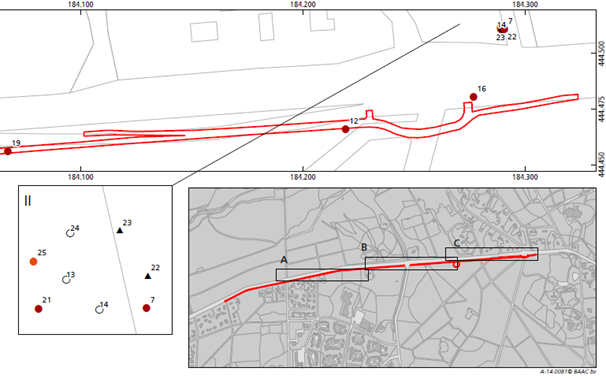

Explosive ordnance:
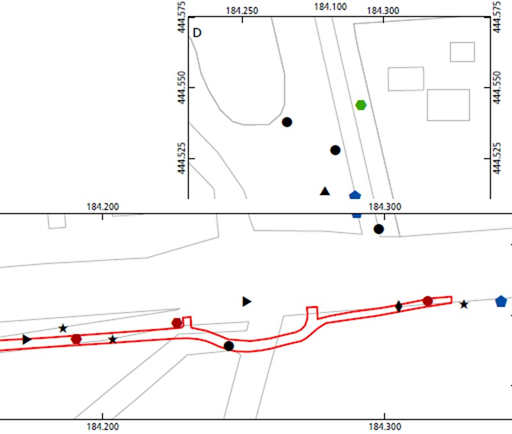
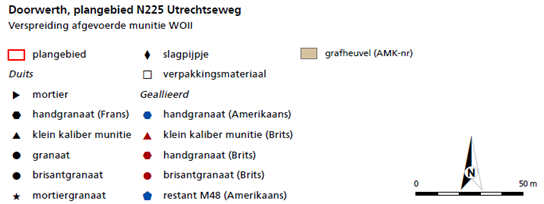
|
UPDATE 09JUN2020:
The Airborne Museum in the
former Hartenstein Hotel in
Oosterbeek was scheduled to be
refurbished and closed for that
matter from 28OCT2019 to 01MAR2020.
Due to the COVID-19 pandemic which
hit the Netherlands in March 2020,
the museum postponed its opening
until 01JUN2020. This agency visited
the newly decorated musuems with its
new displays and rooms on 03JUN2020.
In one of the display cases we found
a small caliber pistol with an
accompanying text which states that
this weapon "probably" belonged to
general Friedrich Kussin.
Why the museum assumes a certain
amount of probability is beyond us
because the provenance of the pistol
has been described in the Newsletter
of the Friends of the Airborne
Museum, No. 101, February 2006, on
page 2:
"General Kussin's pistol"
In September 2004 the Airborne
Museum received a remarkable weapon
out of the hands of Mr. T.J.
Pieterse, chairman of the 'Lest We
Forget' Committee. It is a 6.35
millimeter pistol, brand Orgies’
Patent [should be "Ortgies"; this
agency] made in Erfurt in Germany.
It originates from Sergeant K.B.
Costello, 3rd Parachute Battalion,
who supplied the following history
with it.
'17 September 1944. At 10:30 we
left England and arrived on Ginkel
Heath at 1.30. We advanced through
the woods alongside the road. In
front of us there was gunfire. We
reached the road to Oosterbeek. We
heard a car approaching and took
cover. When the car came into view B
Company opened fire. A number of
young soldiers was far too fanatic
and they almost shot the car in
half. The soldiers inside the car
were dead and we moved on, passed
Hartenstein and came to a
crossroads. There we came under
heavy mortar fire. Because we were
unable to advance further, we
received orders to pull back on
Hartenstein. I was sent back to the
car to see if there were useful
documents still in it.
When I searched the body of the
general he turned out to have a
small automatic pistol in a shoulder
holster under his left arm. I took
the holster with the pistol and put
it in my smock. I then took some
papers and several other weapons
with me to the headquarters. I kept
the small pistol in my smock,
because I knew that one of the
officers would want to have it, if
they saw it.'
Later Kevin Costello was wounded
during combat around the Old Church
in Oosterbeek and as a wounded
prisoner of war was taken to the
Saint Elisabeths Hospital. He was
not searched and therefore the
pistol in his smock was not found.
From the Saint Elisabeths Hospital
he was taken to Apeldoorn and from
there he was supposed to be
transported to Germany by train.
However, Costello managed to escape
from the train and after three
weeks, with the help of the
resistance, joins friendly troops
across the Rhine.
So far the (shortened) statement of
Sergeant Costello. He kept the
pistol as a souvenir for years and
in 2003 gave it to Mr. Pieterse. He
in turn handed it over to the
museum.
|
EXHIBITS:
We took these photos of the
pistol inside a glass display case
in the Airborne Museum in Oosterbeek
on 03JUN2020 and 29JUN2020:
(click to enlarge)
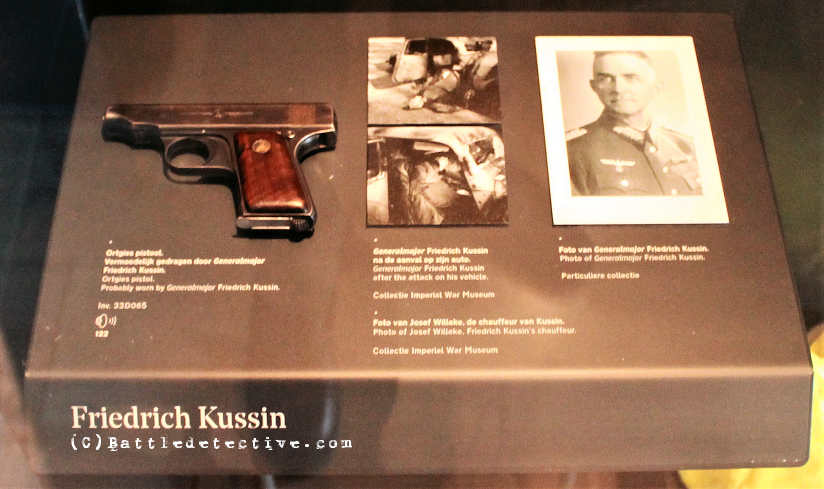
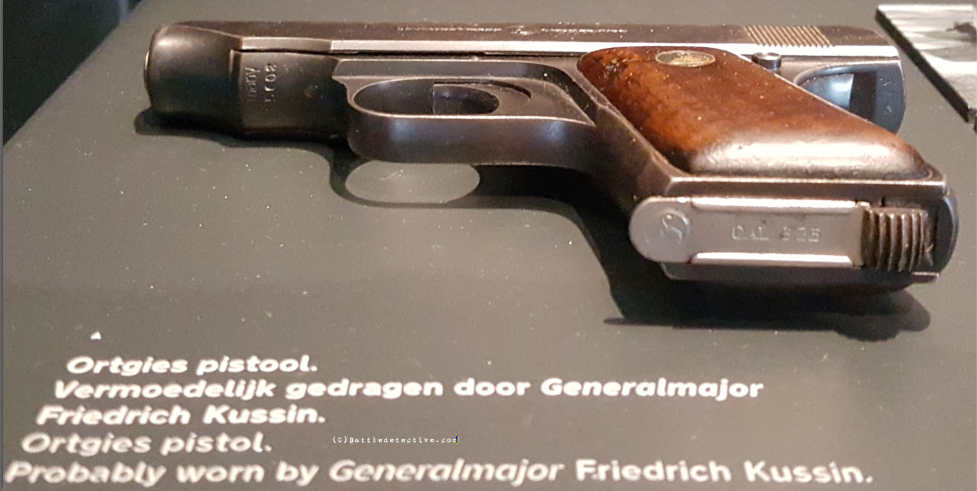
.jpg) |
UPDATE 12MAY2023:
Female passenger in General Kussin’s
car?
Through our
contact form we received a
message from Jim Plumstead on
19APR2023.
Jim wrote: "Reading the above. I
have an eye witness account here in
the UK that one of the four killed
in the car was a German girl in her
20s. Have you heard this? I will
send you a copy of the script....Jim
".
After asking Jim to tell us more he
wrote on 20APR2023: "I have been
there several times and i had read
your account. Then I came across
this account in a parish magazine.
Ginger Wilson seems to have been
there literally minutes after the
event. Second paragraph second page.
Might this have been his
interpreter? But I thought all 4
were still in the car until the two
front seat bodies were dragged out.
Thought you might be interested
based on your detailed
investigation?"
Jim had attached two scanned pages
of a story titled "PART THREE The
memoirs of an Arnhem Veteran
Billeted in Bardney, by Ginger
Wilson".
It starts with a description of
traveling to England by boat on page
14 and then skips to page 16 of the
publication which describes an
eventful march towards Arnhem:
"Our company (Coy) went straight
away to cover the dropping zone for
the Paras. [1] My Section Commander
was made platoon Sgt And I was made
Section Commander. I was then told
to take a PIAT [2] and stop any
trains coming from Arnhem, so Frank
and I set up the PIAT in between the
railway lines. Thank God no trains
came! We had a grandstand view of
the Paras dropping and it was a
magnificent sight. After the ‘drop’
our company got ready to go to
Renkum. [3] At the crossroads we a
German General and his driver lying
on the road. There was also a
blonde girl in German uniform, about
20 years old, lying a few yards
away. I said to my mate: "What a
waste it is!" Everything went
alright until we were going in
single file down the main street
into Renkum."
This story is from the booklet "From
Woodhall Spa to Market Garden, The
1st Airlanding Brigade 1943-45",
first published in 2010 by the
Woodhall Spa Cottage Museum, ISBN:
978-0-9546443-4-5.
After reading this, we replied back
to Jim on 21APR2023:
"Thanks for sending me this.
[…] From what I read, the author/
first-person storyteller mistakes
Oosterbeek for Renkum. He described
that he saw a German general and his
driver lying next to the road when
he came at the crossroads. The
blonde girl in German uniform was
lying next to the road a few yards
away from the scene with the General
and his driver. There is no further
narrative to connect the event that
killed the girl with the shooting of
the German general’s car and its
occupants. So far all 4 occupants
are accounted for. They were all
male. It is also known that more
fatalities occurred near the same
crossroads, such as the actions that
killed
Fredrick Hopwood who had a field
grave a few yards away from where
the German general lay on the road
top.
This is the first time I have read
or heard about a female military
casualty at the
Wolfhezerweg-Utrechtseweg junction.
Without more information I cannot
make any conclusions about what the
author saw.
From Frank Steer’s "Market
Garden, Arnhem, The Landing Grounds
and Oosterbeek" in the
Battleground Europe series (Pen &
Sword Books Ltd, 2002 ISBN
0850528569) we know that Ginger
Wilson was a Lance Corporal in 11
Platoon, "B" Company of the 1st
(Airborne) Battalion the Border
Regiment. It was with his PIAT-buddy
Frank Aston that he had to cover the
railway line at Renkum and stop any
locomotive that might appear from
either east or west. It would have
been much better for their mood had
they known at the time that a
national strike by personnel of the
Dutch Railways coincided with D-Day
of Operation "Market Garden". |
Female German Casualty in the
Oosterbeek Perimeter
So far we have not found other
evidence to confirm the story of a
female German casualty in
Oosterbeek. For instance, the
film footage of paratroopers passing
Kussin's car does not show
another body on the road side.
The only event that is remotely
connected to this would be the
capture of
Luftnachrichtenhelferin (girl in
the service of the Luftwaffe
signals) Irene Reimann who had been
taken prisoner on 17SEP1944 in
Wolfheze. She had just returned from
leave in East Prussia to Wolfheze,
where she occupied billets with a
group of Helferinnen in one
of the buildings of the psychiatric
institution, "Neder-Veluwe" in
Wolfheze.
On a still image from film footage
she can been seen in what appears a
uniform jacket and skirt. |
|
(click to enlarge)
.jpg) |
|
She was first taken to the
school building of the J.P. Heije
Stichting near Wolterbeekweg in
Oosterbeek, where the POWs were
allocated classrooms with Irene in a
room by herself. Early in the
morning of 19SEP1944, it was decided
to concentrate all POWs in the
tennis courts behind the Hartenstein
Hotel, which had been occupied by
Division HQ. Irene Reimann was put
in a wooden shed, some 4 x 2 meters
in size. Here British war-reporters
took photos and filmed the
extraordinary catch amongst the
prisoners. |
|
(click to enlarge)
_small.jpg)
_small.jpg)

_small.jpg) |
|
Of significance is to note that here
Irene Reimann no longer wears a
skirt and jacket but a wool knit
sweater and what appears to be
German uniform trousers.
Nevertheless Irene Reimann survived
the war and could not have been the
casualty that Ginger Wilson claims
to have seen. As advised to Mr.
Plumstead it is not possible to draw
any conclusions about what the
author saw without additional
information. |
UPDATE 08AUG2023:
Four passengers still in the car on
18SEP1944
In the 1 Airborne Division
Intelligence Summary No.2 dated 19th
Sep 1944. Part II Consolidated
Interrogation Report we found this
entry:
.JPG)
“
Major General Kussin (?). Four
corpses found riddled in a staff cat
at cross roads 679785 on the 18th
proved to be Major General Kussin
(?), his batman driver and
interpreter, all from the
Feldkommandantur in Arnhem.”
This suggests that all occupants
were still in the vehicle including
Unteroffiizier (Non
Commissioned Officer) Willi Haupt
described in the 16JUL2016 Update.
Apparently some investigation was
conducted to establish the identity
of the general because in 1 Airborne
Division Intelligence Summary No.4
dated 22 Sep 1944. Part I we read:
.JPG)
"
FOOTNOTE.
The identity of Major General KUSSIN and his
appointment as Feldkommandant of
ARNHEM, mentioned in Summary No. 1
have now been confirmed by his
signature on a court of inquiry on
the death of a sentry killed by a
train on NIJMEGEN Bridge."
The Footnote erroneously refers to
Summary No. 1 instead of No. 2 but
it proves that at divisional level
Intelligence had an interest in
knowing about the Feldkommandant;
at least posthumously.
Source: The Paradata website |
|
UPDATE 22AUG2023:
Information about the Death of
General Kussin from the research
material for A Bridge Too Far
From the digital Cornelius Ryan
Collection of World War II Papers we
have studied many of the author’s
research material for his book A
Bridge Too Far. Most of this
material can be retrieved digitally
on the
Mahn Center for Archives and Special
Collections, Ohio University
Libraries.
It contains questionnaires completed
by veterans who were solicited
through ads placed in Reader’s
Digest magazine during the 1950's
and 1960's. Upon returning the
completed questionnaires, some were
invited to participate in interviews
conducted by Ryan and his research
team. These submissions were filed
in coded, cross-referenced folders,
one for each respondent, and
organized by nationality and
military formation.
The content of several folders sheds
light on the incident on the
T-Junction of Utrechtseweg and
Wolfhezerweg on 17SEP1944.
Seven (7) folders contain
information that was new to this
agency, which will be presented
here. |
1. Cornelius Ryan WWII papers box
108 folder 07 Robert E Urquhart
Pages 21 & 22
"Urquhart ran into the rear
elements of the 3rd Battalion and
was informed by a lieutenant that
Lathbury had gone up front.
A few minutes later, he found him
halted with battalion headquarters
at a main junction on the
Utrecht-Arnhem road.
"Almost on the corner was a German
staff car – a Citroen, I believe -
shot to pieces. Its windscreen was
shattered and on the ground,
half-in, half-out of the car, lay
the body of a fairly high-ranking
German officer. I learned later that
it was General Kussin. His driver
was hanging out of the other side
and two others, whom I assume were
his batman and interpreter, were
dead in the backseat."
Conclusion: The Commanding
General of 1st British Airborne
Division during his personal
inspection of the advance routes of
his units, witnessed General
Kussin's car with all four
passengers still present but the
general and his driver already
placed beside the vehicle. At a
later time he was informed of
Kussin's rank and name. |
2. Cornelius Ryan WWII papers box
111 folder 01 James Sims Page 32
"Another burst of fire nearer
this time sent us scurrying for
cover once again. We lay silent for
a minute then we were off again. We
passed a German Staff Car which had
been badly shot up and all four
occupants killed. One of the
officers in the rear of the car had
his hand on the shoulder of the
driver as though he had seen our
Bren gunner a fraction of a second
too late. The other officer in the
rear of the car turned out to be
General Kussin, German General
Officer Commanding Arnhem and
District so that the enemy had
suffered quite a blow in losing this
car load. I paused for a moment to
look at the dead Germans, I had no
particular feeling for them, only
curiosity as they were the first
dead human beings I had ever seen in
my life."
Conclusion: Private James W.
Sims of 2nd Battalion, The Parachute
Regiment seemed to have heard the
shooting and came onto the scene
when all occupants were still inside
the vehicle. Although he erroneously
places General Kussin in the back
seat on the right, he describes that
the person behind the driver still
had his arm on the driver’s
shoulder. |
3. Cornelius Ryan WWII papers box
111 folder 12 Frederick Bennett Page
5
"We moved off down the road and
soon met our first action. A German
car came down the road and we shot
it up. It tried to stop and back up,
but we blasted it. It was a staff
car of some sort with some
high-ranking Jerry officers. I have
since learned it was General Kussin."
Conclusion: Private Frederick
C. Bennett of "A" Company 3rd
Battalion The Parachute Regiment has
fired on the vehicle during the
incident. |
4. Cornelius Ryan WWII papers box
111 folder 19 Stanley Heyes Pages 6
& 7
"About an hour or so after
dropping, the 3rd. bn. were moving
along a main road to Arnhem, when an
enemy staff car containing some high
ranking officers came from a side
road. This car was shot up, and all
the occupants killed. The cross
roads immediately came under enemy
fire, from a nearby hill."
[…]
"Signalman Stanley Heyes was
moving along the main road to Arnhem
with 3rd Bn. About an hour or so
after dropping, when they were a few
miles from the Dz, they reached some
crossroads at Oosterbeek. Hayes saw
a German staff car which had
obviously been coming down a side
road, sloping towards the crossroad,
coming in on the north side of the
main road. The car had been shot up
and the occupants had all been
killed. They were high ranking
Officers. Heyes presumed that
forward troops of 3rd Bn had shot
them up. As Heyes etc. reached the
crossroads they at once came under
heavy fire, coming from a nearby
hill from where the German car had
come."
Conclusion: Signaler Stanley
Heyes of 1st Parachute Brigade
Signals, 3rd Battalion The Parachute
Regiment seems to have arrived at
the scene shortly after the incident
and came under fire when the enemy
reacted to it. |
5. Cornelius Ryan WWII papers box
111 folder 21 John Lord Page 9
"A short time later, they reached
a crossroads and saw a car riddled
with bullets. The driver was hanging
out of the car on one side and the
body of an officer was half-in,
half-out of the car on the other.
Lord didn’t stop to look at the
officer closely and it was much
later that he found out that it was
the body of a German general,
Kussin.
"I remember thinking," he says,
“That kind of shooting was good for
morale."
Conclusion: Sergeant-Major
John C. Lord of 3rd Battalion The
Parachute Regiment came upon the
scene with General Kussin and his
driver already placed beside the
vehicle. He describes a state of
mind of the advancing Airborne
troops in which it had never been
the intention to stop the staff car
and capture its occupants alive. |
6. Cornelius Ryan WWII papers box
116 folder 09 Neville Hay Page 13
“Hay also passed General Kussin’'
staff car twice that day; the first
time, when he was trying to find
Urquhart, Kussin was in the back;
later, while enroute to the
Hartenstein, the German general was
lying stretched out on the road.”
Conclusion: Lieutenant
Neville Hay of Phantom Net, General
Headquarters Liaison Regiment also
erroneously places General Kussin in
the back seat at first but
nonetheless inside the vehicle when
he first came upon the scene. This
indicates that he was there shortly
after the incident while looking for
Major-General Urquhart. Urquhart
described General Kussin's body
half-out the vehicle and that is how
Lord found it when he was at the
scene for the second time. |
7. Cornelius Ryan WWII papers box
117 folder 01 GA Pare Pages 28 & 29
"On my return, Mr. Marlowe asked
me to bury a German General, whose
body was still leaning out of a car,
where he had been shot about half a
mile away along the main road
towards Wolfheze. It had been
arranged that prisoners should do
the digging. A pilot arrived as
escort, bringing two young S.S.
soldiers aged 17 and 18, who were
both wearing their camouflage
smocks. They sat on the bonnet of
the jeep, and we drove off. The body
of the German General, [illegible]
was certainly badly shot up, and
with it were those of his batman and
interpreter. His car had been
ambushed on the Sunday, and was
riddled with bullets. Near by their
bodies was that of a young Dutch
woman, which I did not touch. The
two Nazis started to dig the grave
at the roadside, for I decided to
have a common burial for the three.
The prisoners had received no food
as they had been promised, so I gave
them a bar of chocolate and
cigarettes. I could not feel
animosity towards them. While German
planes came over, we moved into the
shelter of some trees.
[…]
I obtained some white painted
wood from the corner house and made
crude crosses and posts. The
General’s body had had all its
papers taken by the intelligence
people. The S.S. youths carried the
bodies into the graves and as they
filled in the soil, I crossed the
road to a small mound where the
remains of an Airborne soldier from
Chester had been buried by the men
guarding the road, and made the
mound into a decent grave, and took
away the effects."
Conclusion: On the request of Senior
Chaplain to the Forces attached to
Divisional H.Q. Major/Reverend A.H.W.
Harlow, Chaplain
Captain/Reverend G.A.F. Pare,
attached to No 1 Wing, The Glider
Pilot Regiment, buried the bodies of
General Kussin, driver Josef Willeke
and interpreter Max Koester. The
body of Willi Haupt had been removed
from the scene and was buried
elsewhere (see UPDATE 16JUL2016).
The chaplain described a nearby body
of a woman as that of a Dutch
civilian and not a blonde girl in a
German uniform as described by as
Ginger Wilson (see UPDATE
12MAY2023).
Lastly, the soldier from Chester
buried across the road from the
incident was that of
Private Frederick Walter Hopwood
from Mollington, County of Chester.
Hopwood was buried in a field grave
on the southern edge of the junction
and now rests in grave 22.B.12 on
the Airborne Cemetery in Oosterbeek. |
The original texts of the quotes can
be found
here. |
|

Back to Miscellaneous page |
|
|
|
|
|
| |
| |
| |
| |
|


